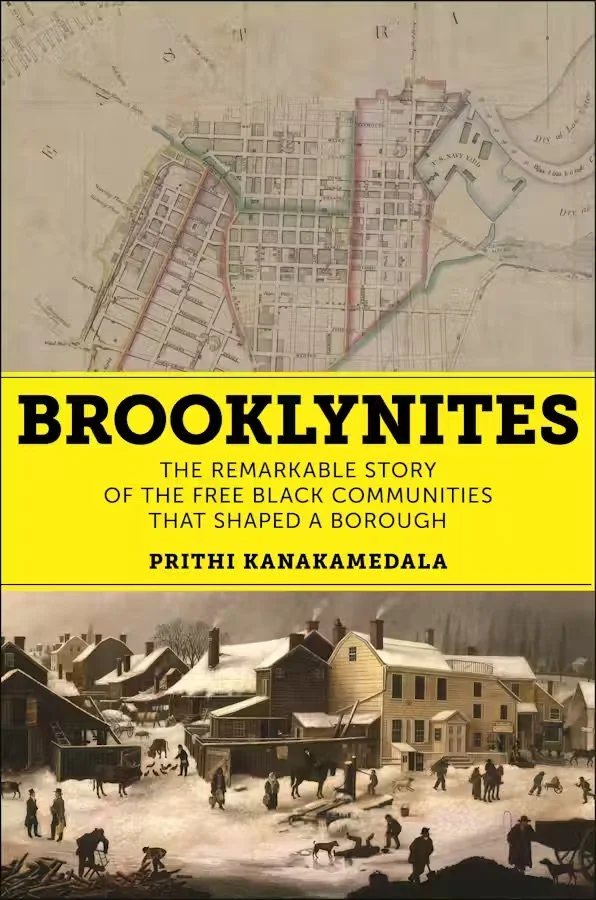Prithi Kanakamedala: Brooklynites
Interviewed by Katie Uva
At the end of the American Revolution, even as slavery was on the decline in places like Philadelphia, Boston, and neighboring Manhattan, slavery’s numbers strengthened in Brooklyn. And that traumatic history is intricately tied to the land. The economy in Kings County was still largely agricultural, and so it was the labor of enslaved people of African descent who made this land a capitalist possibility. Simply put, there would be no Brooklyn without the labor of unfree Brooklynites. That history deserves to be honored; we owe Black Brooklynites a debt today as New Yorkers. In addition, the idea of Brooklyn that we know today — a brand in its own right, with its own attitude and its own entrepreneurial spirit — all of that is deeply embedded in the history of its free Black communities.
Read MoreDamn’d Good Shots: A Matter of Honor on the Streets of New York, 1783
By Todd Braisted
What had caused such hot-headed emotions between the two senior officers present with the regiment? Delicacy, in the 18th Century manner. This life-and-death struggle centered around the regimental clerk, Sergeant James Perkins, being illegally detained by Lt. Col. Campbell to transcribe all his legal proceedings after his being suspended from duty. Upon being ordered to join the corps, after Campbell’s suspension, the disgraced lieutenant colonel made us of “the most rude & violent Expressions, in which Colo. Campbell thought proper pointedly to make use of” against Major Coffin.
Read MoreTwo-Hundred Fifty Years Of Organ-Building In the City: PART I — 18th-Century Imports and a Burgeoning 19th-Century Cottage Industry
By Bynum Petty
Thus, Henry Erben established himself as the greatest organ builder in the country, and with this instrument set new standards of construction and tonal quality by which all others were judged. Erben’s instruments simultaneously established New York City as the leading center of organ building, which it remained for the next nine decades.
Read MoreBlack Loyalists in the Evacuation of New York City, 1783
By L. Goulet and Mary Tsaltas-Ottomanelli
From 1776, the city stood as the stronghold of British operations in the thirteen colonies. The last British officials departed on November 25, ending their seven-year occupation of the city. We remember this event today as Evacuation Day. It was once a celebrated holiday but has since been largely forgotten by the public. Public commemorations primarily concentrated on the return of Patriot forces. It is crucial to move beyond the narrow focus and highlight the importance of expanding public memory to include the experiences of Loyalists who evacuated and the thousands of Black Loyalists who sought their freedom.
Read MoreThe Great New York Fire of 1776
Reviewed by Donald F. Johnson
The fire, which came on the heels of the British conquest of lower Manhattan island, killed hundreds, burned about a fifth of the buildings in the city, and created long-lasting housing and food crises for thousands of civilians and soldiers. In the aftermath, British, Continental, and New York authorities blamed one another for the conflagration as ordinary people sought to recoup their losses, rebuild their lives, and take advantage of opportunities opened by the destruction. . . The Great New York Fire of 1776 makes us rethink many of our assumptions about the American Revolution and New York City’s role in it.
Read MoreDavid Grim’s Fairy Tale: The New York City Fire in Myth
By Benjamin L. Carp
On September 21, 1776, a fifth of New York City burned to the ground... But for almost 250 years, most New York City historians either ignored the Great Fire… or argued for its unimportance. They assumed that the fire was caused either by accident or by apolitical miscreants, and they chose to diminish the reports of outraged eyewitnesses who believed the fire was deliberate… most Americans never heard this story, then or since…
Read MoreDutch-American Stories: On the First Dutch Translation of the U.S. Constitution
By Michael Douma
There are a few topics that guarantee a historian an audience. Write a decent biography of Abraham Lincoln or James Madison, for example, and you are bound to have readers. Or, write something new and interesting about the Constitution and you might attract some attention.
Read MoreBefore Central Park
Reviewed by Kara Murphy Schlichting
Before Central Park is Sara Cedar Miller’s fourth publication about New York City’s famous greensward. Miller is historian emerita and, since 1984, a photographer for the Central Park Conservancy. Before Central Park is distinctive in its combination of Miller’s photography, her expert understanding of the park’s geography and archeology, and her meticulous real estate history of parkland from the 17th through the 19th centuries.
Read More






